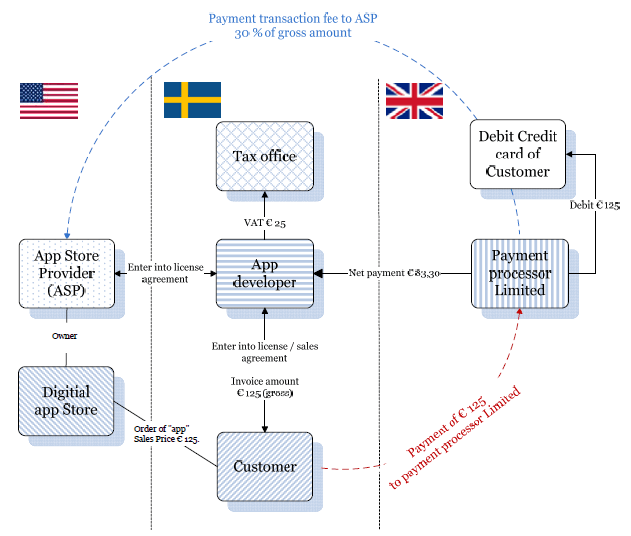Starting in January 2015, a fundamental shift will happen in the EU affecting all app developers. If you are doing business in the EU (as defined by an end user in the EU downloading your app), you will have to start paying VAT (value added tax, or sales tax, GST, whatever you may call it) on each and every sale. What does that mean to you as an app developer? While we are not tax experts, and this is not tax advice, we point out a few things you should consider looking into.
1. You will retain less revenue
The main effect on most developers, if your app store of choice has not started doing it yet, is that you will keep less of the revenue that you sell for. If you sold for €0.99 in Germany for instance, the app store may have paid you 70% of that, or €0.69. Now however, the app store will have to pay 19% of the end user price to the German government, leaving you with a net of €0.58 as a payout of the after tax amount. Many app developers may have already experienced this from stores that are already enforcing VAT charges.
2. You may have to pay the tax yourself
If you have a PPD business model where the app store charges the user, or if you use an in-app billing SDK that the app store uses, you are generally covered as the app store is likely to take care of the reporting and payment of tax for you. Naturally you should check this..
If you however use a third party in-app SDK, the app store will most likely not be considered the entity selling to the consumer, rather you will be. The whole scenario is well explained by tax experts Bird & Bird:

In their “Pocket Guide to EU VAT & Digital Commerce“, they go:
“the contractual relationship could be as follows: The final consumer purchases the app via the app store and enters into a contract with the app developer and/or app store; the app developer concludes a contract with the app store provider, and enters into a separate contract with a payment processor (e.g. mobile operator/credit card company) which debits the final consumer the gross price for the app. It withholds a certain percentage of the gross amount and forwards this percentage to the app store provider and/or to the bank/telcom provider (if the final consumer pays through its mobile provider). The remaining amount is then forwarded to the app developer.
The supply chain is often long and can stretch across borders. In such cases, it can be challenging to determine the point in time when the services are actually supplied to a final consumer and the identity of the actual supplier in the supply chain who should be responsible for the VAT payment on that supply.”
What does this mean? Well, it means if you are using in-app purchases not supplied by the app store, you may be legally obligated to:
- Register for VAT in an EU territory
- Track and record all sales by consumer location
- Pay VAT to that state on a regular basis for sales across the entire European Union
This can get further complicated if you use mobile carrier billing, such as Fortumo or Bango, as the carrier may be withholding VAT before paying the content provider (or the payment service provider), in which case VAT has already been paid – but if they have not, the responsibility may be on you. The key here is keeping good records and understanding what your billing partner can provide.
3. There is no escape
It does not matter where your business resides. What matters is that you are selling to European consumers. So whether you are based in Brazil or Taiwan, if you are deemed as the one who supplies the service to the end user, you will have to register for VAT, and start paying it. The good news is that you only need register and pay VAT in one country, as that country’s tax authority will then settle to other EU territories. However you will have to know exactly where your users have paid, so you can pay the right amount of VAT. This information will likely have to come from your payment provider, whether PayPal, Amazon, Fortumo or others, or through tracking the country code of the users mobile phone, etc. The Explanatory Notes from the EU provides a lot of detail about identifying the consumer location.
The problem gets even worse, in that IF you make mistakes, and classify the country where the end user resides wrongly, and a government comes after you for it (if they suspect you have used VAT rates in low VAT countries like the UK instead of high VAT countries like Sweden on purpose), you cannot rely on a third party’s information (see the Explanatory Notes above for more on this). So then what? We could be looking at many developer headaches. Of course, the chances that they will come after small companies is of course slim – but your best bet would be to play by the rules.
And while the EU is doing this now, expect this to happen in other countries soon. If 2014 was the year of mobile (or was it 2013?), 2015 may be the year of the tax lawyer.
Share this article on